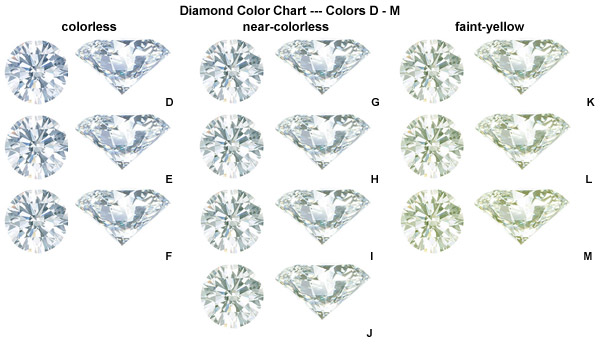Diamond Color
All of the diamonds sold through Gem Nation are colorless. The GIA (Gemological Institute of America) has established
an industry-accepted color grading system that rates diamonds with alphabetical letters. D (no color) is the most
expensive "color" and N through Z (very light to light yellow), the least expensive. Diamonds that are graded from
D through J are best suited for jewelry because they look colorless or nearly colorless. Color is a matter of personal
preference. If you plan to mount the diamond in a platinum or white gold setting, you may wish to choose a color from
D through H. Colors below H have a slightly yellowish hue which appear more yellowish in platinum or white gold settings
and are therefore best suited to yellow gold settings.
Fluorescence
Diamond fluorescence indicates that the diamond emits light when exposed to Ultraviolet light (long-wave radiation) or sunlight.
Diamonds exhibit fluorescence when small amounts of the element boron are present in the stone. Blue is the most common color of
fluorescence, but other colors are also possible. The majority of diamonds don't exhibit fluorescence.
The impact of fluorescence has long been debated; in the Winter 1997 issue of GIA's Gems & Gemology, William E. Boyajian,
President of the Gemological Institute of America, had the following to say on the topic:
Opinions of even the most experienced trades people vary widely. With great conviction, some say that blue fluorescence
of different strengths typically enhances a diamond's overall appearance. Others, as convincingly, say that it has a
negative effect. To address this controversy, researchers at the GIA Gem Trade Laboratory conducted an experiment on
the effects of long-wave ultraviolet radiation on the color appearance and transparency of gem diamonds . . .
[The findings of the] study challenge the perception held by many in the trade that UV fluorescence generally has
a negative effect on the overall appearance of a diamond.
In fact, the results support the age-old belief that strong or even very strong blue fluorescence can improve appearance
rather than detract from it, especially in diamonds with faint yellow body color . . . While the apparent benefits of
blue fluorescence are less obvious in colorless to very near-colorless diamonds, they still were evident in the study.
This should bring into question the trade's lower bid prices for moderate to highly fluorescent diamonds in the better
colors.
Before diamond grading reports became so popular, there was a widespread preference in the trade for stones with fluorescence.
These diamonds were called "blue-white" diamonds, and long time diamantaires can recall a time when many buyers would insist on
diamonds with fluorescence. The preference began to decline after the FTC outlawed the misuse of the term "blue-white". The
following is excerpted from the Federal Trade Commission's "Guides for the Jewelry, Precious Metals, and Pewter Industries".
Misuse of the term "blue white."
It is unfair or deceptive to use the term "blue white" or any representation of similar meaning to describe any diamond
that under normal, north daylight or its equivalent shows any color or any trace of any color other than blue or bluish.
Unfortunately, it had the unintended effect of casting suspicion over any diamonds with fluorescence.
The bottom line about fluorescence
A D-colored diamond (the highest color) with very strong fluorescence may display a "haze" or "cloudiness" that detracts from
the overall luster of the stone. However, diamonds exhibiting fluorescence especially those diamonds with lower colors like
I or J may seem more white and give the appearance of being G-color or H-color diamonds. Since the diamond trade still
undervalues diamonds with any fluorescence in the colorless color-grades (D through F), customers may obtain a diamond
at a relative bargain when buying one with faint or even medium fluorescence. For excellent value in a diamond with no
noticeable color to the unaided eye, look for near-colorless grades of G-color through J-color, and a fluorescence grade
of medium or strong blue.
The diamonds below are exposed to a strong Ultraviolet light source. The light intensity is identical for all
photographs. All diamonds are colorless.
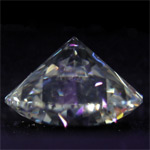
Diamond with
NO fluorescence
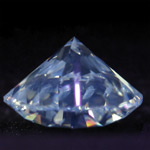
Diamond with
FAINT fluorescence
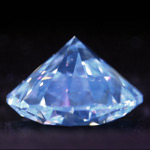
Diamond with MEDIUM
BLUE fluorescence
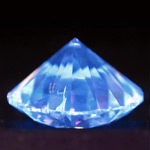
Diamond with STRONG
BLUE fluorescence
Note: On GIA and other diamond grading reports, a diamond's fluorescence may be
described as "None". Customers should be aware that "None" on these reports specifically means
"Less than Faint", and does necessarily indicate "Absolutely No" fluorescence that one would
rationally assume.
